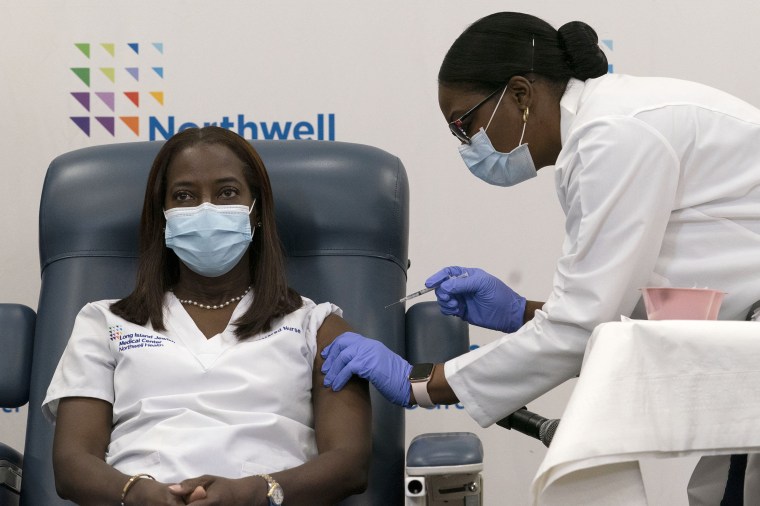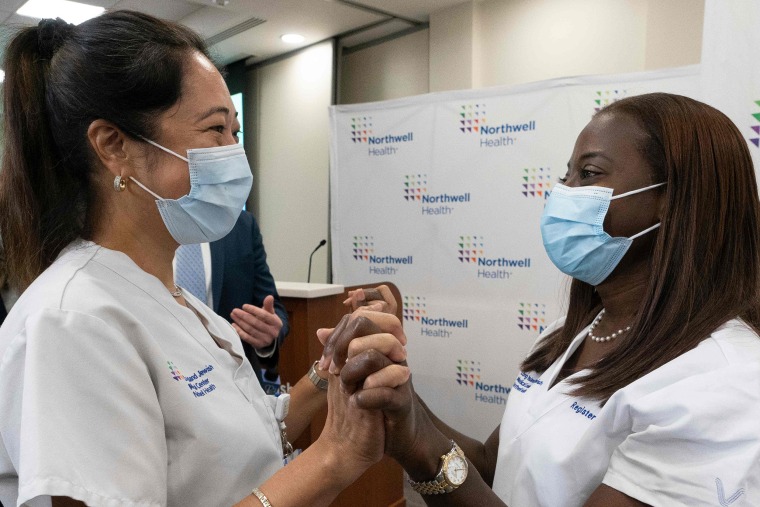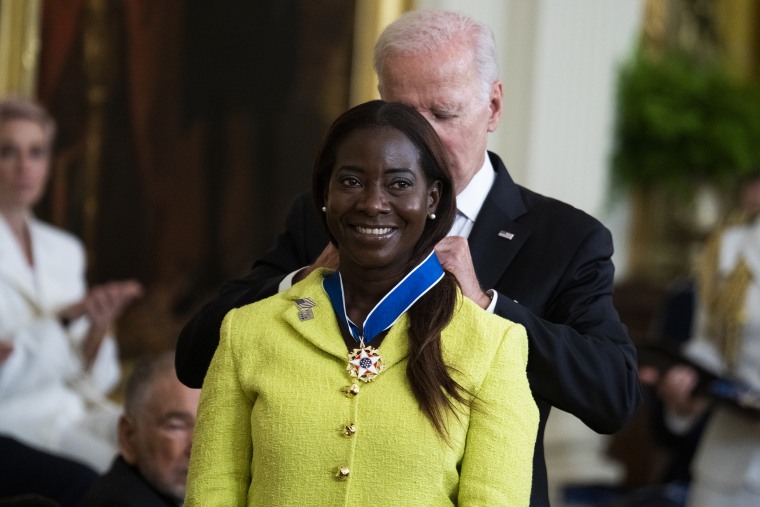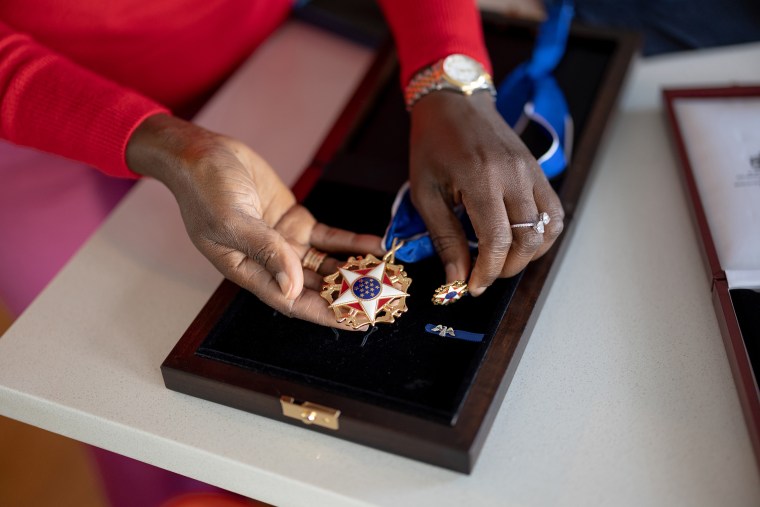
Two years after the first Covid shots went into arms, a growing chorus of researchers is calling for a new generation of vaccines that provide broader and more long-term protection against the disease.
The U.S. is currently recording around 430 Covid deaths per day, on average, according to NBC News’ tally. That includes many people who received at least two Covid shots: Six in 10 adults who died of Covid in August were vaccinated or boosted, according to a report by KFF, a nonprofit health think tank. And for the most part, vaccinated people don’t avoid infections or reinfections anymore.
“Coming up with a vaccine that’s going to last longer and cover a wider range of the Covid family of viruses is a life and death problem,” said Dr. Tom Frieden, who directed the Centers for Disease Control and Prevention until 2017 and is now president of the public health organization Resolve to Save Lives.
Many people thought the solution to that problem had arrived two years ago, on December 14, 2020, when Sandra Lindsay became the first person in the U.S. to get a Covid vaccine outside of a clinical trial.
“My whole life just changed tremendously in that one moment in time,” said Lindsay, who is now the vice president of public health advocacy at Northwell Health.

“What was going through my mind is, ‘I cannot wait for this needle to pierce my arm,’” she said.
Millions of people shared her impatience, for good reason: Adults who are up to date on their shots are 15 times less likely to die from Covid than those who are unvaccinated. Covid vaccines prevented more than 3.2 million deaths and 18.5 million hospitalizations in the U.S. from December 2020 through November 2022, according to an analysis published Tuesday by the Commonwealth Fund and Yale School of Public Health.
But at first, the shots were perceived to be even more powerful than that — a shield against mild symptoms and a ticket back to pre-pandemic life. The reality proved more complicated and, in certain ways, disappointing.
Many experts maintain that we can — and must — do better.
In particular, researchers think sprays or drops given through the nose or mouth could do a better job of stopping transmission. They also hope that vaccines that target multiple parts of the virus or several variants at once could reduce the need for continuous boosters.
“It’s sometimes easy to forget what a tremendous achievement it was to get a brand new vaccine against a brand new class of viruses… it was pragmatic, and it was tremendously successful. But it’s certainly not the panacea,” said Matthew Miller, scientific director of the Michael G. DeGroote Institute for Infectious Disease Research at McMaster University. “We can certainly improve on what we know now.”
The promises and shortcomings of mRNA
Vaccine researchers generally agree that mRNA technology was suited to the needs of this pandemic, since it allowed scientists to develop a vaccine quickly at a time when each day meant more lives lost. Scientists then updated the shots relatively easily to target new variants.
“If it wasn’t mRNA, it wouldn’t have gotten done so fast,” said Dr. Barney Graham, former deputy director of the National Institutes of Health’s Vaccine Research Center, now a senior adviser for global health equity at Morehouse School of Medicine.
To date, he added, the Covid vaccine is “one of our simplest, safest vaccines that we’ve ever made.”
When Lindsay got her vaccine in 2020, she was dealing with severely ill Covid patients every day as director of nursing critical care at Long Island Jewish Medical Center.
“It felt like you were just walking into a burning building, but it’s your job,” she said. “It’s what I love doing: taking care of people. So I was going in there no matter what, and just praying every day that I don’t fall ill.”

Despite the odds, Lindsay still hasn’t gotten Covid, as far as she knows. But the majority of Americans have, according to CDC estimates — a situation most of the public did not anticipate when clinical trial results showed 95% efficacy against symptomatic disease.
“It may be that the vaccines were their own worst enemies in some ways, because they were so good initially that people had an expectation that went beyond reason,” Graham said.
Experts agree now, though, that protection from Covid shots fades too fast. Plus, a lack of access to vaccines in many countries allowed the virus to spread rampantly and mutate over time, which has undermined vaccines and treatments.
“If we had immunized the whole world in six months, we may not be having all the problems with the variants because we would have constrained [the] virus’ spread earlier,” Graham said.
The future of Covid vaccines: No needles
When Lindsay volunteered to get her vaccine on day one, she wasn’t aware that she was the country’s very first recipient — despite the cameras.

Now, she said, she still gets recognized.
“I was in TJ Maxx the other day and this man who I didn’t expect was basically bowing down at my feet, [saying] that through my one action, I saved his life, his family’s lives, and so many more,” Lindsay said. “Those are the stories that just solidify for me that what I did on that day made a big difference.”
But others see Lindsay as the face of a promise that fell short.
“You get this on social media, when you post anything: ‘Well, how do you feel now that this thing was all a lie? People are not supposed to get Covid and you got the shots and it’s a big letdown,’” she said.

Researchers still hope that in the future, nasal spray vaccines could inspire more confidence by offering more protection against illness, reducing side effects and removing needles from the equation.
Because Covid seems to infect most people through the nasal passages first, administering a vaccine in the nose could vanquish the virus before it has a chance to spread, the thinking goes.
“It’s sort of akin to having guards placed outside the door in the mucus layer, versus waiting for the invaders to come in,” said Dr. Akiko Iwasaki, an immunobiology professor at Yale University who is developing an intranasal Covid vaccine.
Globally, 117 intranasal Covid vaccines are in development or have been rolled out, according to an analysis provided to NBC News by Airfinity, a health analytics company. Five have been approved in at least one country — two in China and one each in India, Iran and Russia — and 20 more have entered clinical trials. The majority rely on traditional vaccine platforms, not mRNA.
“There’s probably a number of advantages to the intranasal route that will be realized once that route is fully exploited. People can administer it themselves. You can use it in a developing world setting. You can use lower doses,” said Dr. David Curiel, a professor of radiation oncology at Washington University School of Medicine in St. Louis. “There may even be a safety gain, and you get sterilizing immunity and possibly block transmission.”
Curiel developed the technology for the nasal vaccine approved in India. But the vaccine hasn’t entered trials in the U.S., and trial results from India haven’t been published in a peer-reviewed journal.
Other researchers are betting on inhaled vaccines, which come in the form of aerosolized mists administered through a nebulizer into the lungs, where the virus tends to wreak the most havoc.
In September, China approved an inhaled version of a previously authorized Covid shot, called Convidecia. A small trial showed that the inhaled booster dose produced a stronger antibody response than a booster of the intramuscular shot.
Miller and his McMaster colleagues are testing two inhaled vaccines in phase 1 human trials. The more effective candidate will likely advance to phase 2, he said.
Those vaccines might offer an additional advantage, according to Miller: They target three parts of the coronavirus, whereas the current shots target just the spike protein, which mutates faster than the virus’ other components.
Still, some researchers worry that protection from nasal or inhaled vaccines could also wane quickly.
“If we can give a vaccine at the site where infection typically occurs, we would always love to do it that way. The challenge, of course, is that sometimes it doesn’t generate the same type of bloodstream immunity that we really want,” said Dr. Buddy Creech, director of the Vanderbilt Vaccine Research Program.
Creech said future versions of mRNA shots could potentially be tweaked to target three or more coronavirus strains. (The new bivalent boosters target two.)
“It will not be surprising if at some point we need something like a trivalent vaccine or some other permutation of what we have now,” he said. “It could very well mirror what we do with influenza.”

Then there’s the idea of targeting several different coronaviruses at once. The National Institute of Allergy and Infectious Diseases has allocated more than $62 million for research and development of pan-coronavirus vaccines.
In July, researchers at the California Institute of Technology showed that their candidate protected mice and monkeys from the viruses that cause both Covid and SARS. In October, researchers at Duke University School of Medicine similarly showed that their pan-coronavirus vaccine protected animals from multiple SARS-related viruses.
But unlike in 2020, the federal government’s motivation to fund Covid-related innovations is drying up. Whatever Covid vaccine comes next is likely three to five years off, Miller estimated — or perhaps longer, according to other experts.
“The mRNA technology is remarkably successful — these vaccines work better than we had the right to expect,” Frieden said. “But the virus is adapting. And as the virus adapts, we need to adapt.”

 Latest Breaking News Online News Portal
Latest Breaking News Online News Portal




